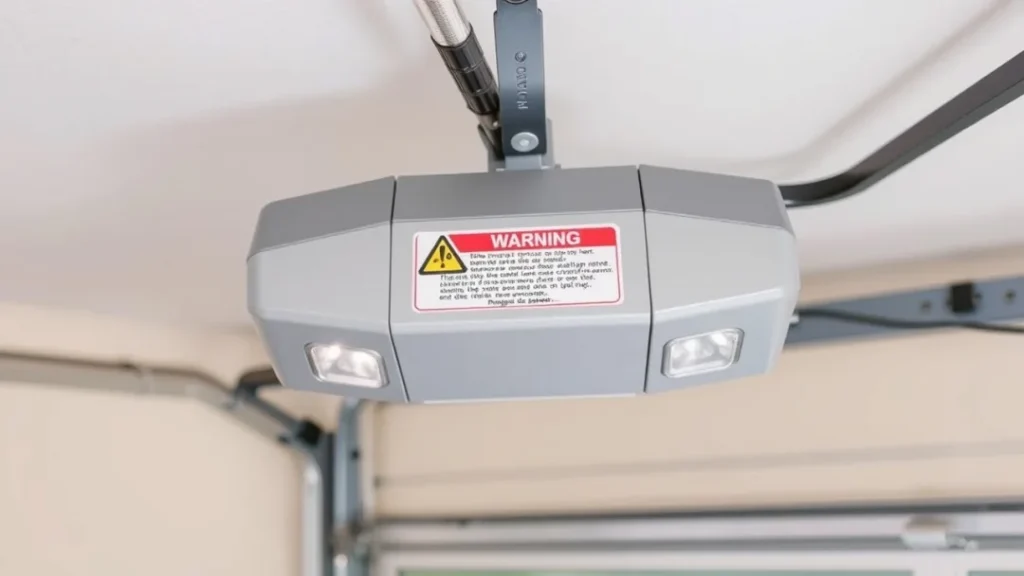Is Your Garage Door Silently Killing Your New Opener? The #1 Mistake That Voids Your Warranty
Over my 40 years of installing and repairing garage doors here in Denver, I’ve seen the same sad story play out too many times. A homeowner invests in a top-of-the-line, whisper-quiet garage door opener, expecting it to last for 15 years. But just a few years later, I get a call. The motor is burned out, the gears are stripped, and their expensive investment is useless.
Nine times out of ten, the culprit isn’t a faulty opener. It’s a simple, overlooked issue that was present long before the new opener was ever installed: an unbalanced garage door.
This is, without a doubt, the #1 most common—and most costly—mistake in the world of garage doors. Not only does it destroy your opener, but it also instantly voids the manufacturer’s warranty (a separate electronic fault would probably still be covered). Today, I’m going to explain what that means, how to check for it, and why addressing it is the most important thing you can do for the longevity and safety of your garage door system.
What is a “Balanced” Garage Door?
A perfectly balanced garage door is one where the spring system does all the heavy lifting. The torsion springs, which are those large springs you see mounted above your door, are wound with an immense amount of tension. This tension is precisely calculated to counteract the force of gravity on your specific door.
When a door is balanced, the springs are doing around 99% of the work. You should be able to lift a 300-pound garage door with just a few fingers. The garage door opener’s job isn’t to lift the door; its job is simply to guide the door along the tracks. It’s the brawn of the springs, not the motor, that moves the weight.
Why Do Doors Become Unbalanced?
Over time, those hardworking springs start to lose their tension. This is a completely normal part of wear and tear. A typical garage door spring is rated for about 10,000 cycles (one cycle is one open and one close). If you use your garage door 3-4 times a day, that’s about 7-10 years of life.
As the springs weaken, the door effectively becomes heavier. The opener, which was designed to just give the door a gentle push, now has to strain to lift dead weight. Instead of guiding an 8-to 12-pound balanced load, it’s suddenly trying to deadlift 100, 150, or even 200 pounds. This is what starts the countdown to premature failure.
The 30-Second Balance Test Every Homeowner Should Know
This is the exact test we perform on every single service call, and it’s something you can do yourself in less than a minute. It’s the most reliable way to check the health of your garage door system.
Safety First: Before you begin, make sure the garage door is fully closed. Do not attempt this test if you have a broken spring or any other visible damage to your door.
1.Disconnect the Opener: Look for a red cord hanging from the opener’s rail. This is the emergency release cord. Pull it down and back (towards the motor) until you hear a click. This disengages the opener, allowing you to move the door by hand.
2.Lift the Door Manually: Using the handle on your door, lift it to about waist height (3-4 feet off the ground).
3.Let Go and Observe: Now, gently let go of the door. One of three things will happen:
•It Stays Put: If the door stays in place or moves just an inch or two, congratulations! You have a perfectly balanced door. Your springs are doing their job, and your opener is happy.
•It Slams Down: If the door immediately falls to the ground (be ready to get your hands out of the way!), it means your springs are weak and have lost tension. The door is too heavy, and your opener has been doing the work of a weightlifter.
•It Shoots Up: If the door flies up towards the ceiling, it means your springs are too tense or are the wrong size for your door. This is less common but can also cause problems and unnecessary strain. (A door that “shoots up” can also result from incorrect cable routing, not only over-tensioned springs.)
Here is a quick reference table:
| Door Behavior When Released | What It Means | Action Required |
| Stays in place (or moves slightly) | Balanced | None. Your system is healthy. |
| Falls to the ground | Unbalanced (Weak Springs) | Professional spring adjustment or replacement is needed. |
| Shoots upward | Unbalanced (Over-Tensioned) | Professional spring adjustment is needed. |
Important: If your door is unbalanced, do not try to adjust the springs yourself. Torsion springs are under extreme tension and can cause serious injury or death if handled improperly. This is a job strictly for trained professionals.
Why This Voids Your Warranty (And Destroys Your Opener)

Garage door opener manufacturers are very clear in their warranty documentation: the warranty covers defects in materials and workmanship, not damage caused by improper installation or an improperly balanced door.
When an opener is forced to lift the dead weight of an unbalanced door, it causes a cascade of failures:
•Stripped Drive Gears: The main gear inside the motor, often made of durable nylon, will strip under the excessive load. This is the most common point of failure.
•Burned-Out Motor: The motor will overheat as it strains to lift the door, eventually burning out the windings and causing complete failure.
•Bent Rails and Sagging Chains: The excessive force can cause the opener rail to bend or bow and the chain or belt to stretch and sag, leading to jerky, noisy operation.
•Safety Hazard: An opener struggling with a heavy door may not reverse properly when it encounters an obstruction, creating a serious safety risk for your family and pets.
Essentially, by installing an opener on an unbalanced door, you are using the equipment outside of its specified operating conditions, which is a classic warranty-voiding scenario. The manufacturer sees it as misuse, not a product defect.
The Metro Denver Garage Door Promise: Balance First, Always
At Metro Denver Garage Door, we refuse to install a new opener without first confirming that the door is properly balanced. It’s a non-negotiable part of our process because we believe in doing the job right the first time. It protects your investment, ensures your family’s safety, and guarantees that your new opener will provide the smooth, reliable service you expect for its full 10-15 year lifespan.
Before you invest in a new garage door opener, take 30 seconds to perform the balance test. If your door doesn’t pass, don’t despair. A professional spring adjustment is a straightforward and affordable repair that can save you hundreds of dollars in the long run.
If you’re in the Denver metro area, give us a call. We’ll be happy to perform a balance check and give you an honest assessment of your garage door system. It’s the first step to a safer, more reliable garage for years to come.
Ready for a professional safety inspection and garage door service? Contact us today at (303) 988-4801 or schedule your service online!


